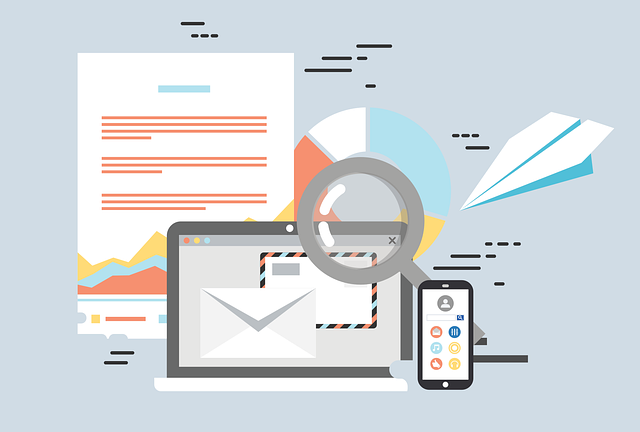Are you ready to unlock the hidden treasure trove of email marketing metrics that will catapult your blog to new heights? Get ready to dive into the world of data-driven success with our guide to the 9 email marketing metrics every blogger should track.
These metrics are like secret weapons, giving you the power to understand and optimize every aspect of your email campaigns. From the euphoric moment of the open rate to the triumphant click-through rate, each metric offers valuable insights into your audience’s behavior.
Conversion rate will be your loyal companion, guiding you towards higher sales and engagement. But beware of the treacherous bounce rate and unsubscribe rate, as they can spell disaster for your blog’s growth.
And finally, the ultimate metric that will make every blogger’s heart soar – ROI (Return on Investment). So, buckle up and get ready to conquer the email marketing world one metric at a time!
Key Takeaways
- Open rate and click-through rate are important metrics to track for email engagement.
- To improve click-through rate, bloggers should focus on creating compelling subject lines, clear call-to-action buttons, segmenting email lists, and conducting A/B testing.
- Conversion rate is a key metric to measure the effectiveness of email campaigns, and bloggers can improve it by focusing on customer engagement, lead generation, and personalized messaging.
- Bounce rate and unsubscribe rate are indicators of email deliverability, engagement, and subscriber retention, and monitoring them helps maintain a clean and engaged subscriber base.
Open Rate
The open rate is a crucial metric that you should keep a close eye on to gauge the effectiveness of your email marketing campaigns. It measures the percentage of recipients who actually open your emails, giving you valuable insight into email engagement.
A high open rate indicates that your audience finds your emails interesting and relevant, while a low open rate may suggest that your subject lines are not capturing their attention.
To improve your open rate, focus on crafting compelling subject lines that grab readers’ attention and entice them to open your emails. Once you have mastered the art of subject line effectiveness, you can move on to the next important metric: click-through rate.
This metric measures how many recipients click on the links within your emails, indicating their level of engagement.
Click-through Rate
One interesting statistic to add depth to hook the audience is that the average click-through rate for blogs is 2.69%. To increase your blog’s engagement rate, it’s important to track and improve your click-through rate.
Here are four ways to optimize your click-through rate:
-
Create compelling and personalized email subject lines to encourage readers to click.
-
Use clear and prominent call-to-action buttons that stand out in your emails.
-
Segment your email list and send targeted campaigns to specific groups, increasing the relevance of your content.
-
Conduct A/B testing to determine which email designs, layouts, and content formats generate the highest click-through rates.
By implementing these strategies, you can boost your click-through rate and maximize the effectiveness of your email marketing efforts.
Now let’s dive into the next important metric: conversion rate.
Conversion Rate
Boosting your click-through rate is only the beginning; now let’s explore how to skyrocket your conversion rate and turn those clicks into valuable actions.
Your conversion rate measures the percentage of email recipients who take the desired action, such as making a purchase or signing up for a newsletter. It is a crucial metric for measuring the effectiveness of your email marketing campaigns.
To improve your conversion rate, focus on customer engagement and lead generation. Craft compelling email content that speaks directly to your audience’s pain points and offers a clear call to action. Use personalized and targeted messaging to build trust and encourage action.
By optimizing your conversion rate, you can maximize the return on your email marketing efforts.
Now let’s dive into the next section and discuss how to minimize your bounce rate.
Bounce Rate
Reducing your bounce rate is like watching your audience slip through your fingers, leaving you with missed opportunities and an empty inbox. To ensure that your emails are reaching the intended recipients and engaging them effectively, it’s crucial to track your bounce rate. Here are four key reasons why monitoring your bounce rate is essential:
-
Email deliverability: A high bounce rate indicates that your emails aren’t being delivered to the intended recipients, potentially due to invalid or inactive email addresses.
-
Email engagement: A low bounce rate suggests that your subscribers are actively engaging with your content, indicating a healthy and interested audience.
-
List quality: Tracking bounce rate helps you identify any issues with your email list, such as outdated or inaccurate contacts, allowing you to maintain a clean and engaged subscriber base.
-
Campaign effectiveness: By analyzing bounce rates, you can gauge the success of your email campaigns and make necessary adjustments to improve future results.
Reducing your bounce rate is the first step towards optimizing your email marketing strategy. Next, let’s dive into the crucial aspect of monitoring your unsubscribe rate.
Unsubscribe Rate
Take control of your audience’s preferences by keeping a close eye on how many subscribers choose to unsubscribe from your content. Monitoring your unsubscribe rate is crucial for understanding subscriber engagement and maintaining a healthy email list.
A high unsubscribe rate may indicate that your content is not resonating with your audience or that your list needs some hygiene. By regularly analyzing this metric, you can identify trends, test different email strategies, and make necessary adjustments to improve subscriber retention.
Remember, it’s not just about acquiring new subscribers; it’s about keeping them engaged and interested in your content. So, pay attention to your unsubscribe rate and take proactive measures to keep it low.
Now, let’s dive into the next section, where we’ll discuss the importance of ROI (Return on Investment) in email marketing.
ROI (Return on Investment)
You’ll be pleased to know that tracking the ROI of your email campaigns can provide valuable insights into the effectiveness of your marketing efforts. Studies have shown that businesses earn an average of $38 for every dollar spent on email.
By analyzing email campaign success, you can determine how well your marketing strategy is performing and make data-driven decisions for future campaigns. Here are three reasons why tracking email marketing effectiveness is essential:
-
Measure the success of your campaigns: Tracking ROI allows you to see which campaigns are generating the most revenue and which ones are falling short. This information can help you identify areas for improvement and optimize your future email marketing efforts.
-
Determine the most effective tactics: By analyzing ROI, you can identify the specific strategies, content, and offers that resonate with your audience. This insight enables you to refine your approach and focus on what works best.
-
Allocate your resources wisely: Tracking ROI helps you understand where your marketing budget is providing the highest return. By identifying the most profitable campaigns, you can allocate your resources more effectively and maximize your overall marketing impact.
Don’t miss out on the opportunity to gain valuable insights and make informed decisions by tracking the ROI of your email campaigns. It’s a crucial step in optimizing your email marketing strategy and driving better results for your blog.
Frequently Asked Questions
How can I improve my open rate?
To improve your open rate, focus on crafting compelling email subject lines that grab readers’ attention. Use action words, personalization, and urgency to entice them to click. Experiment with different subject line lengths, as shorter ones tend to perform better.
Additionally, consider the timing of your emails. Analyze your audience’s behavior and send messages when they’re most likely to be engaged and receptive.
By optimizing your subject lines and timing, you can boost your open rate and drive more traffic to your blog.
What factors can affect my click-through rate?
Email design and targeting strategies are two key factors that can significantly affect your click-through rate.
An effective email design that is visually appealing, easy to navigate, and mobile-friendly can encourage readers to click on your links.
Additionally, implementing targeted strategies such as personalization, segmentation, and sending relevant content to specific audience segments can improve engagement and drive higher click-through rates.
By focusing on these factors, you can optimize your email marketing efforts and increase your chances of driving traffic to your blog.
How can I calculate my conversion rate?
To calculate your conversion rate, divide the number of conversions (such as purchases or sign-ups) by the total number of visitors to your blog, and multiply by 100. This gives you a percentage that represents how effective your blog is at converting visitors into customers or subscribers.
Conversion rate optimization involves analyzing and improving your blog’s design, content, and calls to action to increase this rate. Don’t underestimate the power of tracking and optimizing your conversion rate to boost your blog’s success.
What actions can I take to reduce bounce rate?
To reduce bounce rate and optimize email deliverability, focus on strategies to improve email engagement.
Start by segmenting your email list and sending targeted, personalized content.
Make sure your subject lines are compelling and your email design is visually appealing.
Regularly clean your email list by removing inactive subscribers.
Also, consider implementing double opt-in to ensure that subscribers are genuinely interested.
By taking these actions, you can decrease bounce rate and increase the effectiveness of your email marketing efforts.
How can I measure the ROI of my email marketing campaigns?
To measure the ROI of your email marketing campaigns, start by tracking email performance metrics. Monitor key indicators such as open rates, click-through rates, conversion rates, and unsubscribe rates.
These metrics will give you insights into how successful your campaigns are in engaging and converting your audience. By measuring email campaign success, you can identify areas for improvement and optimize your strategies to achieve better results.
Remember, tracking and analyzing these metrics is crucial for a successful email marketing strategy.
Conclusion
In conclusion, as a blogger, tracking email marketing metrics is essential for the success of your campaigns. By monitoring open rates, click-through rates, conversion rates, bounce rates, and unsubscribe rates, you can gain valuable insights into the effectiveness of your emails.
Additionally, calculating the ROI allows you to measure the profitability of your email marketing efforts. While it may seem overwhelming, these metrics provide valuable data to help you optimize your email strategy and ultimately drive more engagement and revenue.
Don’t let the fear of complex analytics hold you back, start tracking these metrics today and watch your email marketing soar!









